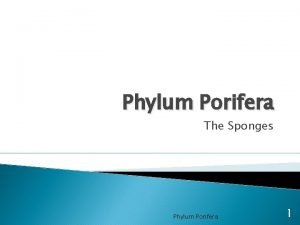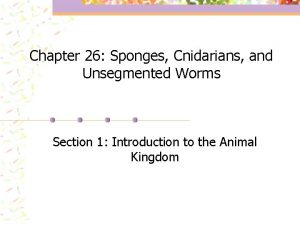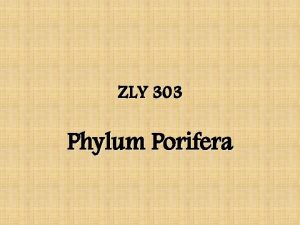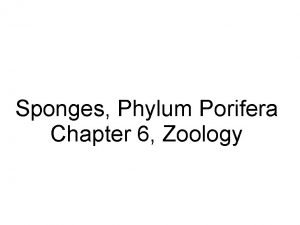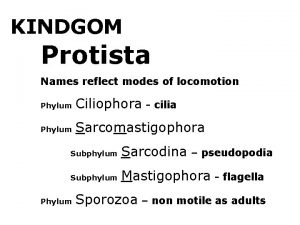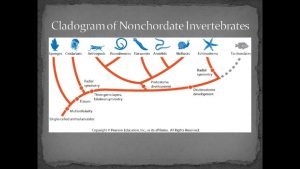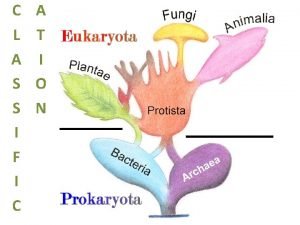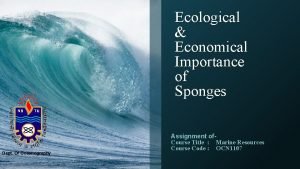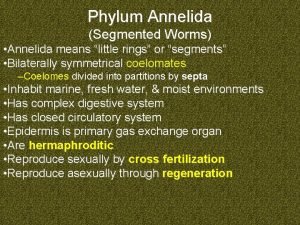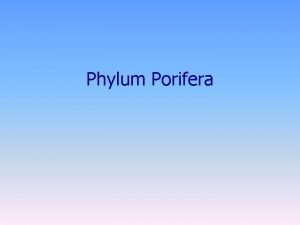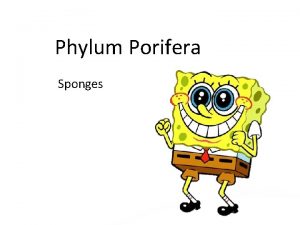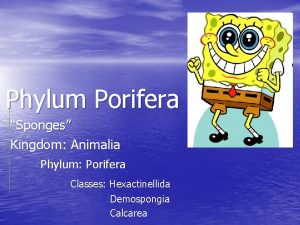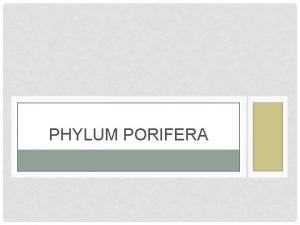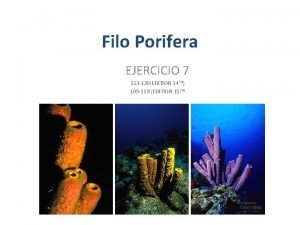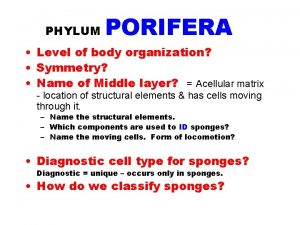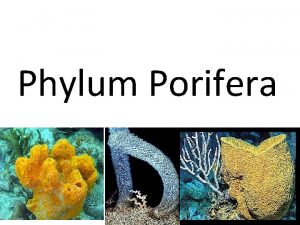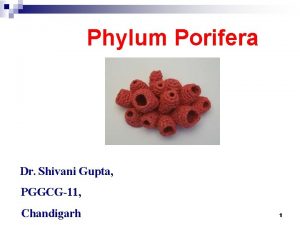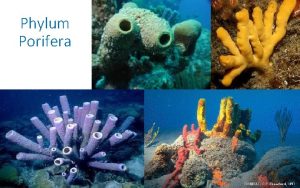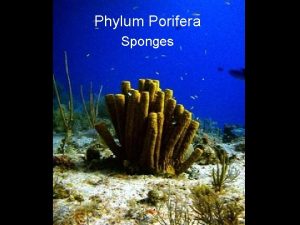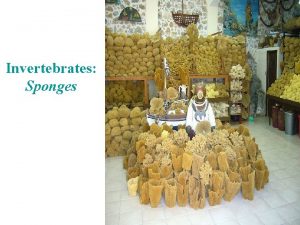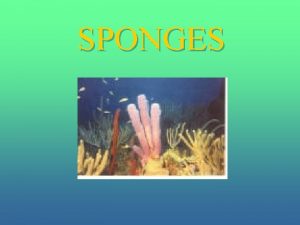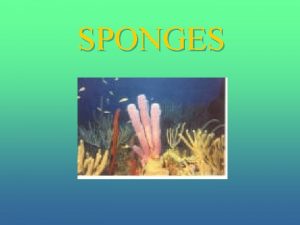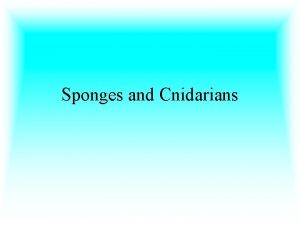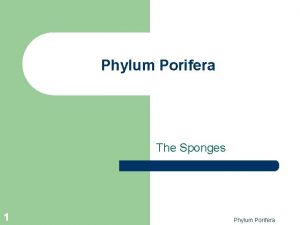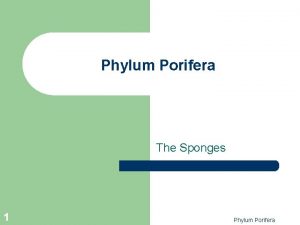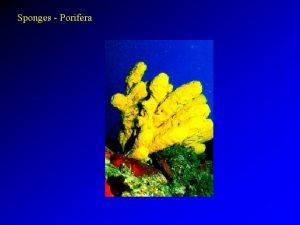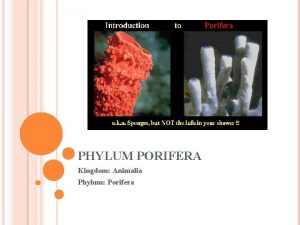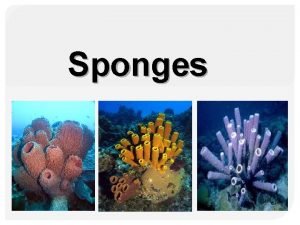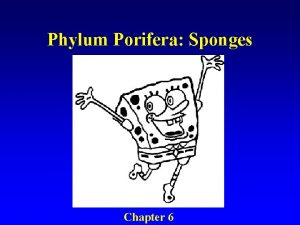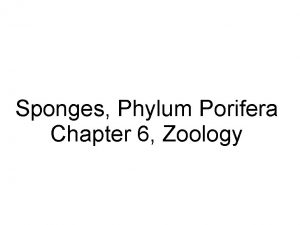Phylum Porifera The Sponges 1 Phylum Porifera Phylum

















- Slides: 17

Phylum Porifera The Sponges 1 Phylum Porifera

Phylum Porifera Overview l Most primitive of the multicellular animals – l Sponges – – 2 There is some debate if sponges are complex colonial protozans and not metazoans. Over 7, 000 species, approximately 40 species that occur in local waters 2% of all sponges are freshwater, none are terrestrial Phylum Porifera

Phylum Porifera Overview 3 l Sponges occur in shallow water habitats and vary widely in size (up to 1 m. high) and shape – Unlike most metazoans they lack: l All sponges are sessile filter feeders Phylum Porifera

Sponge Diversity Erect Rope Sponge Black-ball sponge Yellow Tube Sponge 4 Phylum Porifera

Porifera Anatomy 5 l Spongocoel l Ostia l Oscules Phylum Porifera

Collar Cells l Choanocytes 6 Choanocytes: (collar cells) act as a pump to bring water into the sponge Phylum Porifera

Sponge Support l Collagen is found between the inner canals and chambers – l Ameboid cells located in the mesohyl, have different roles – – 7 Mesohyl Archeocytes Sclerocytes Phylum Porifera

Sponge Support 8 Phylum Porifera

Spicules l Collagen is stiffened by adding microscopic mineral accretions or additional protein fibers (spongin) or both. – 9 Spicules: skeleton structures, made of calcium carbonate (Ca. CO 3) or silicon dioxide (Si. O 2). Spicules Phylum Porifera

Sponge Types

Porifera Reproduction l l l Asexual budding Regeneration: can regenerate from broken pieces Sexual – 11 Usually hermaphroditic with male and female cells scattered throughout the connective tissue. Phylum Porifera

Porifera Larvae l Neighboring sponges are fertilized by sperm entering through the ostia – 12 Ciliated mouth less larvae (parenchymella) is released. Parenchymella Phylum Porifera


Porifera Classification l Phylum Porifera – – 14 Class Calcarea Class Demospongiae Class Hexactinellida Sclerospongiae is no longer considered a class Phylum Porifera

Class Calcarea l l l 15 Have spicules made of calcium carbonate Mostly small in size (<15 cm. ), and form irregular masses Never contain spongin, restricted to shallow water, and strictly marine Phylum Porifera

Class Demospongiae (Most sponges) l l Have spicules made of silicon dioxide (Si. O 2) or spongin or a combination of both Most sponges belong to this class (90%) – l l 16 Nearly all are leuconoid body type Mostly found on the continental shelf Spongia spp. (Bath sponge) Phylum Porifera

Class Hexactinellida (Glass sponges) l l 17 Spicules are made of silica Usually found in deep water on soft substrates in the tropics 200 -1, 000 m. Spicules are six pointed and have a lattice-like structure Cup, vase or urn shape Euplectella (Deep sea Glass sponge) Phylum Porifera
 Bagian tubuh porifera
Bagian tubuh porifera Sponges belong to the phylum
Sponges belong to the phylum Totipotent cells in porifera
Totipotent cells in porifera Sponge cell
Sponge cell Amoebocyte function
Amoebocyte function Phylum
Phylum Vissoral
Vissoral Features of porifera phylum
Features of porifera phylum Importance of sponge
Importance of sponge Annelus means small ring
Annelus means small ring Porifera characteristics
Porifera characteristics Porifera body plan
Porifera body plan Porifera
Porifera Collar cell
Collar cell Phylum porifera
Phylum porifera Symmetry of phylum porifera
Symmetry of phylum porifera Characteristics of ascon
Characteristics of ascon Phylum porifera
Phylum porifera
